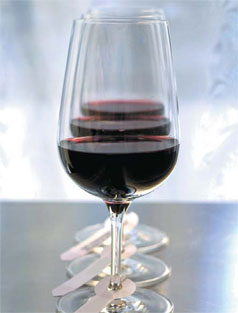Yes, Brunello, thanks Brunello! … and China! Just a suggestion to change your life and come here to produce your wine! Why not?
Now, with recession hovering over their main markets in Europe and the United States, makers of premium Italian wines are turning to China where wine is becoming increasingly popular and the newly rich easily splash out on a top-price bottle.
Makers of famous Tuscan red Chianti and its upmarket cousins Nobile di Montepulciano and Brunello di Montalcino opened The House of Tuscan Wine in Shanghai in July to promote their output in China’s major industrial center.

A 1.2 million euro ($1.55 million) investment put together by Tuscan administrative bodies, chambers of commerce and Italy’s oldest bank Banca Monte dei Paschi di Siena would pay off as wine imports to China were set to rise after liberalization of import licenses in 2007, Mugnaioli said.
Wine consumption in China has been growing by 8 percent a year over the past few years and is expected to hit 1 billion bottles in 2011, the Consortium of Brunello producers says.
Industry experts say China may become the world’s eighth largest wine consumer by 2012.
Tuscany – China, Corking competition
The French and other major wine producers have been faster than Italians in realizing the huge growth potential of the Chinese market. The competition is fierce for carving out market niches, Mugnaioli says.
“It’s good that there is competition. Every competitor, every wine producer is bringing Chinese consumers closer to wine,” he says, fresh from taking a group of Chinese buyers and reporters on a week-long wine tour early this month.
Italian winemakers have analyzed the Chinese market and changed their previous consumer target, which was in the age group between 40 to 60 years old and was considered to have the best purchasing power, Mugnaioli says.
“Our new target is in a range of 20-35 years old: graduates with stable jobs, well-paid and with a Western model of lifestyle and food habits,” he says.
Red wine is a symbol of class and luxury in China where it accounts for 90 percent of consumed grape wine, experts say.
Enoteca Italiana has started its promotional activity in China with Tuscan wines. However, it hopes other wine-making regions will join the initiative, overcoming their long-standing reluctance to work together, Mugnaioli says.
Italian wine exports to China remain tiny at about $20 million in 2007 compared with total Italian wine exports of about 3.5 billion euros a year, according to industry data.
But exports to China jumped 64 percent last year, making Italy the fourth-biggest wine exporter there after France, Chile and Australia.
